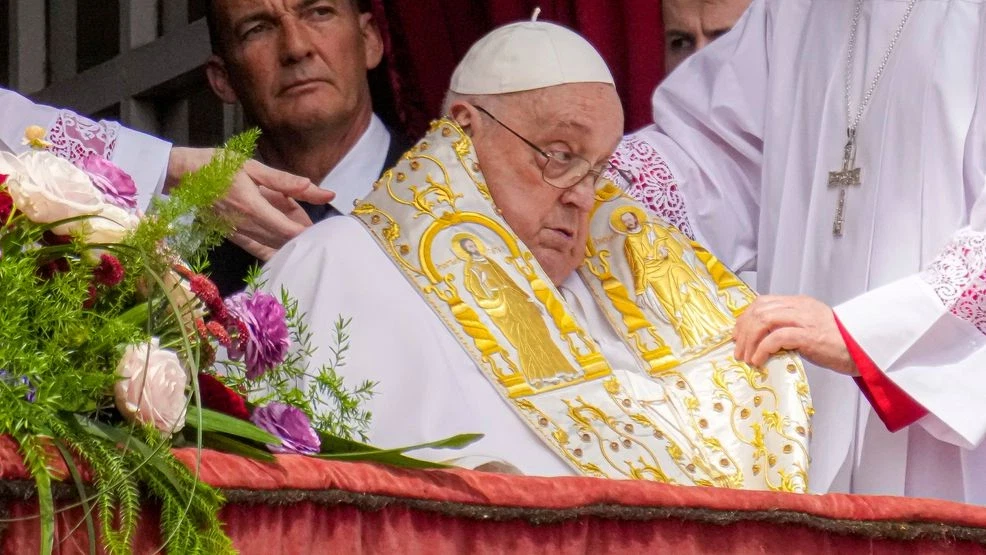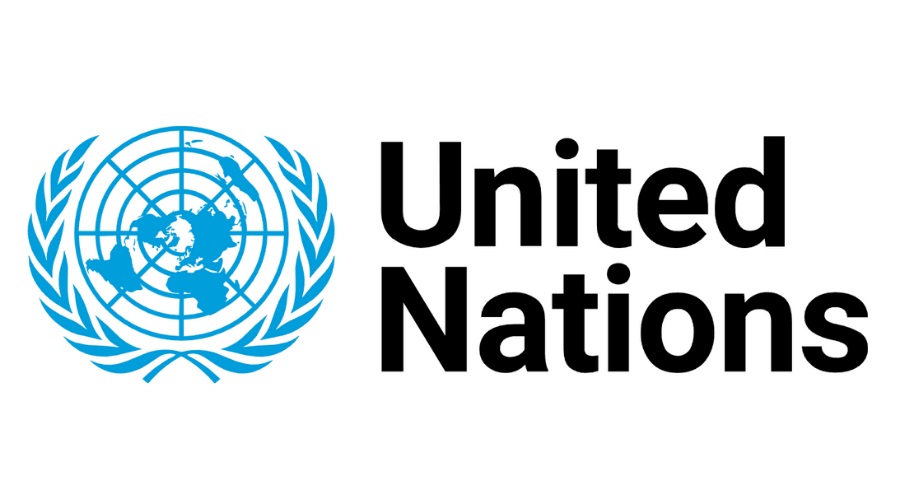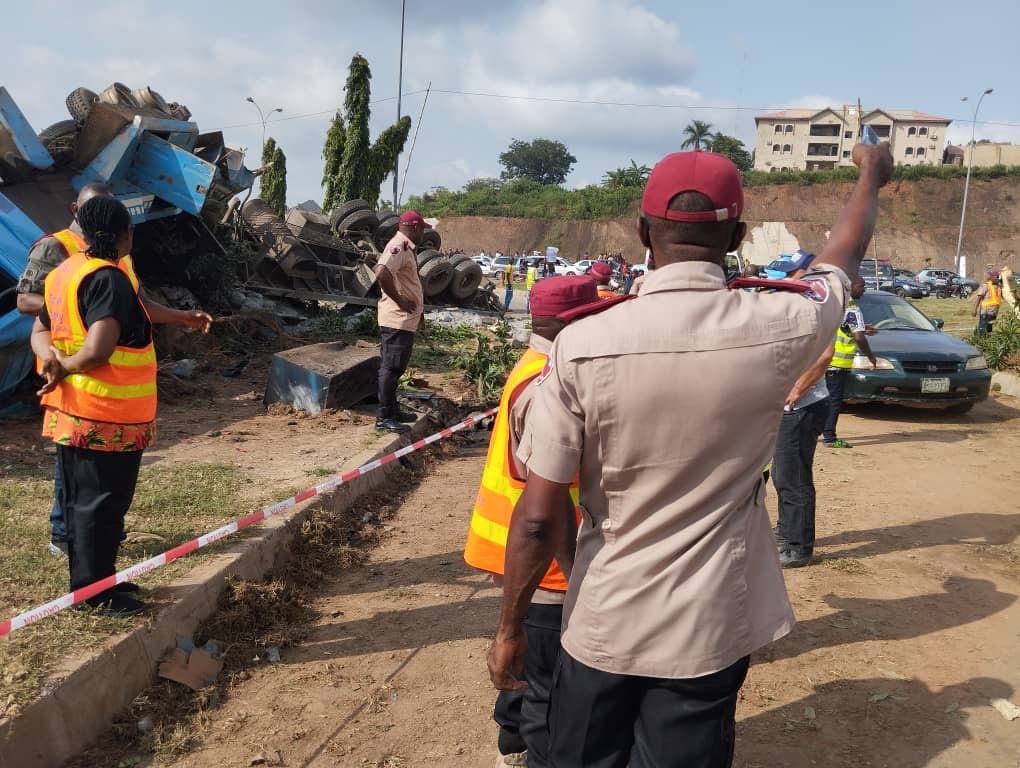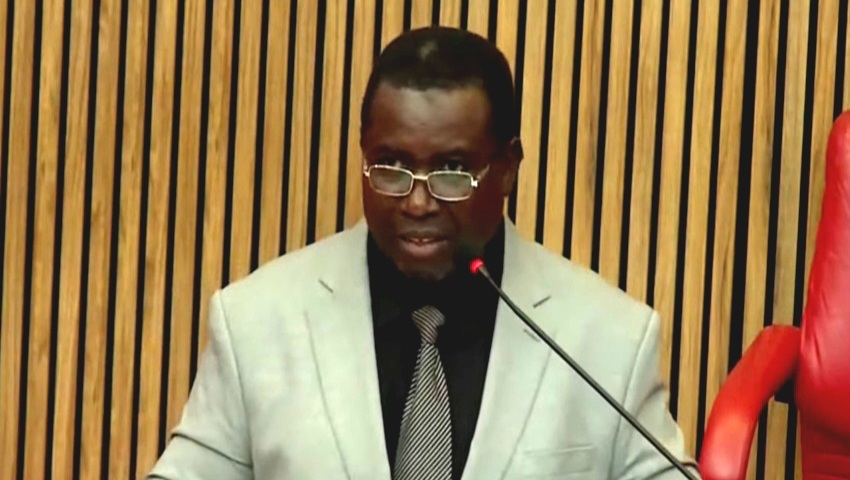The Vatican has announced that Pope Francis died of “Cerebral stroke and subsequent irreversible heart failure”.
The Catholic Pontiff passed away on Easter Monday morning at the age of 88 after leading the 1.4 billion strong global Catholic Church for 12 years (2013 to 2025).
The death of Pope Francis, the first Latin American leader of the Roman Catholic Church, has prompted mourning among Catholic faithful worldwide as tributes pour in from world leaders, including from British Monarch King Charles, Italy’s Giorgia Meloni, and JD Vance, who briefly met the Pope on Sunday.
The Vatican confirmed the pontiff, whose original name was Jorge Mario Bergoglio, died at 07:35 local time on Monday; he was recently discharged from hospital after weeks of treatment for an infection.
US President Donald Trump sent his tribute from the White House to Pope Francis. Trump, presiding over an annual Easter celebration, announced that he signed an executive order ordering all flags to be flown at half -mast in honour of the pontiff.
“He was a good man,” the president said. “He worked and loved the world.”
Asked what message he had for Catholics, Trump said “we love you all.”
“We’re here for you all,” he said, adding that he feels “very badly” for those saddened by the Pope’s death.
Russian President Vladimir Putin remembered Pope Francis as a “defender of the highest values of humanism and justice”, the Kremlin said.
It added that Putin “had the privilege of communicating with this outstanding man on many occasions”.
The Russian president “will forever retain the fondest memory of him,” the Kremlin said.
Argentina’s president, Javier Milei, has declared seven days of national mourning in Pope Francis’s home country, according to his spokesman.
Nigerian President Bola Tinubu hailed the pontiff describing him as a “trenchant voice” for climate action.
South Africa’s President Cyril Ramaphosa said Pope Francis had “humility” and a profound commitment to “making the Church and the world a better place”.
Meanwhile Australian Prime Minister Anthony Albanese called the late Pope a “modernist”, and said he was “a devoted champion and loving father” for Australian Catholics.
Bangladesh’s interim government said Pope Francis was “a towering figure of moral clarity, humility, and compassion”.
Former US President Joe Biden said the Pope was “unlike any who came before him” and would be remembered as among the most “consequential leaders of our time”
Former President Barack Obama and Michelle Obama said he was a “rare leader who made us want to be better people” and “shook us out of our complacency”
Pope Francis was a source of immense pride for Argentina, where the majority of the population identifies as Catholic, and the wider region.
The Pope’s focus on helping the poor and tackling economic inequality resonated in a country that has faced years of economic turmoil. Though, in the past, these views led to a strained relationship with President Milei due to ideological differences.
He provided a strong – and progressive – voice for the Catholic Church in Latin America, home to nearly 40% of the world’s Catholics, at a time when evangelical Protestantism is on the rise in the region.
He was named Auxiliary Bishop of Buenos Aires in 1992 and then became Archbishop.
His supporters saw him as a strong voice for the Southern Hemisphere more widely, drawing attention to global inequality after centuries of European leadership of the Catholic Church.
His critics felt he failed to do enough to oppose Argentina’s brutal military dictatorship, a period where thousands of people were tortured, killed, or forcibly “disappeared” from 1976-1983.
Pope Francis served as Archbishop of Buenos Aires from 1998 until he was elected Pope in 2013 and this cathedral was where he worshipped and celebrated many Masses.
Archbishop of Buenos Aires Jorge García Cuerva said the best tribute they could pay to the Pope would be “to come together and stop confronting each other all the time”.
“All of us have to be a bit more like Francis. We have to realise that the Church has to be a place for everyone, we can’t discriminate against anyone or leave anyone out,” he added.
Following the death of Pope Francis, Cardinal Kevin Farrell became the acting head of the Roman Catholic Church – a role he will hold until a new pope is elected.
Farrell is currently the “camerlengo” – the person who runs the Vatican from the death or resignation of one pope to the election of another.
He will also preside over the “rite of the confirmation of death” and place the Pope’s body in a coffin.
Dublin-born Farrell attended the University of Salamanca in Spain and the Pontifical Gregorian University in Rome.
He was appointed Bishop of Dallas in 2007 before Pope Francis called on him to serve as the leader of the Vatican’s new department responsible for the pastoral care of families and raised him to the rank of cardinal. In 2019, Pope Francis nominated him Camerlengo of the Roman Catholic Church.
The new Pope has to be chosen by the Catholic Church’s most senior officials, known as the College of Cardinals.
The Cardinals, who are all men, are appointed directly by the Pope, and are usually ordained bishops. There are currently 252 Catholic cardinals, 135 of whom are eligible to vote for the new Pope.
The others are over the age of 80, which means they cannot take part in the election, although they can join in the debate over who should be selected.
From Buenos Aires to the Vatican: Pope Francis’s path to the papacy
17 December 1936: Jorge Mario Bergoglio is born in Buenos Aires, Argentina
March 1958: Enters the novitiate of the Society of Jesus, starting his period of candidacy to become a Jesuit priest
December 1969: Ordained as a Jesuit priest
May 1992: Appointed titular Bishop of Auca and Auxiliary of Buenos Aires
February 1998: Made Archbishop of Buenos Aires, a role he holds until March 2013
February 2001: Created Cardinal, and is assigned the title of San Roberto Bellarmino
April 2005: Takes part in the Conclave in which Pope Benedict XVI was elected
March 2013: Elected Supreme Pontiff, and installed as Pope Francis six days later, after Pope Benedict steps down





